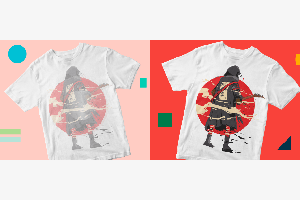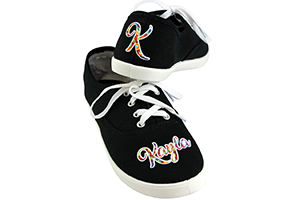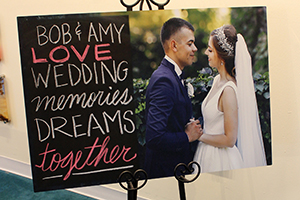March 6, 2018
One of the best sales and marketing tools I have used is mobile decoration. This type of setup allows you to take equipment to specialty events, trade shows, craft shows, etc., and produce custom-decorated items on the spot.
Excellent profits and valuable business exposure are two benefits of this kind of operation. However, you must do the necessary research and preparation before jumping in with both feet.
The first step in preparing to go mobile is selecting the right events. Start by examining your own business. Do you have any niche markets or specialty items? If so, consider events that relate to those subjects. If it’s a specialized event, ensure you can “talk the talk” and “walk the walk.”
For example, if you have clients in the equestrian market, consider horse shows. But you also should understand the “language” and know the differences between horse species. In addition, have plenty of pertinent designs available — the more unique, the better. If your horse designs aren’t biologically correct, they may not sell.
Of course, there are many other events besides horse shows. My particular niche is boating and fishing shows. We have a tremendous amount of experience in this market, as well as an excellent collection of original boat and fish designs, and do quite well. Other decorators choose dog, car or air shows; soccer tournaments; craft shows; and so on.
Once you have an idea of your target event type, consider its facilities. Will you be working outdoors or inside? Is power available or do you need a generator? Does the event supply after-hours security? Are there restrictions on what can be sold? How many other decoration companies are there? How many people attend? Do you need a local vendor’s license or special permit? What about sales tax? All of these things can impact your success and profits.
Demographics Matter
It is important to get details about who is attending the event and their buying habits. We have experimented with many types of shows and narrowed it down to a specific type (for us): boat shows, preferably salt-water oriented. On average, the salt-water enthusiast has a higher income and is more willing to spend money. In addition, salt-water fishermen tend to name their boats and are eager to buy custom products with their boats’ names or logos on them.
How do you obtain this type of information? Unfortunately, experience is the best method, but you can do some preliminary research. First, visit the chosen event as a spectator to look and listen. What are people saying and buying? People tend to voice their likes and dislikes in large, crowded places where they aren’t overly concerned about being heard.
Second, are they spending money or just browsing? Our worst experiences have been craft shows and street festivals. They tend to attract families looking for bargain-basement deals, rather than serious buyers. (An admission charge usually indicates serious buyers will be attending.) Our best results have been specialty shows that are geared toward a segment of the population with a healthy discretionary income.
Next, choose the merchandise you want to sell, and remember to offer something the target market will purchase. You also should be careful with inventory costs. Select items that have a high margin, but also are easy to sell on a daily basis so you can get rid of them if the event wasn’t as successful as you had hoped.
Pay attention to production time. Coffee mugs are excellent all-around products that appeal to virtually every market. But, a single mug can take up to five minutes of pressing time compared to one minute of pressing time for flat products. That means you can press five flat items in the same time as one mug.
Another factor to consider with inventory is visual appeal. Your displays will be much more interesting and exciting if you have a variety of merchandise styles and colors. This can add to your inventory costs, but it will enhance your sales potential.
Display fixtures will help enhance the appearance of your operation, as well as showcase your offerings. In choosing the appropriate fixtures, first determine how much space you will have available. A typical trade show booth is 10′ x 10′. Different types of products will require different display methods. Obtain a fixture catalog and look for ideas.Also, don’t forget decorative items; we use a mounted sailfish, fishing rods, boat pictures, plants, banners, etc.
Equipment Needs
The next area to address is equipment. Sublimation systems tend to be easy to move, so they work well for events. The most challenging aspect is a heat press, which can be moved but needs a table or stand to support its weight. Don’t forget the power required to run it.
Also, think about supplies you will need. How will you manage them? How much space will you need to operate? Shop your local department stores for sturdy, stackable plastic containers that you can work out of when possible. It will save a lot of time and confusion if you can simply remove the lid rather than unpack a box.
For example, we bought a large, two-drawer cabinet and added wheels to it. Supplies were located in the top drawer and substrates were in the bottom. In addition to storage, the cabinet top served as a production area.
Once you have invested in equipment, find a way to transport everything. Hauling your equipment, displays and
products in the back of a pickup truck is not wise. Cargo trailers can be purchased for a fairly reasonable price and have excellent resale value, so shop around for the model that best suits your needs. (By the way, a dual-axle trailer provides a much smoother ride than a single-axle one).
For outdoor events, look for a trailer that is large enough to serve as a portable workshop. Consider built-in air conditioning, a generator, lighting, etc. Also, you may need a large concession window on one side so you can take orders without leaving the trailer.
Regardless of the trailer’s size or layout, you will need a method of securing your equipment and containers. We installed padded brackets to support our equipment and secured everything in place with ratchet straps. The rest of our containers and “road boxes” were held in place using ratchet straps connected to D-rings built into the trailer walls.
Next, ensure a simple pricing and selection method for customers. Consider a flat-rate method with no hidden costs. Each item has a single price that includes the substrate, image and sales tax (if allowed by state rules). Focus on “round” numbers so that you can easily make change if someone pays with cash.
Your first busy show will be quite stressful, but with a little experience and a lot of organization, things should run smoothly and efficiently. I have participated in numerous events with a mobile operation. There have been a few flops, but most experiences have been quite profitable.
Because we have targeted our efforts to a very specific market, we are successful at each show we attend. Just remember, you may have to try different events and products until you find the combination that works.
Award-winning author and international speaker Jimmy Lamb has more than 20 years of apparel decoration experience. He currently is manager of communications for Sawgrass Technologies, Charleston, South Carolina. For more information or to comment on this article, email Jimmy at jlamb@sawgrassink.com.
April 12, 2023 | Sublimation
As you work toward becoming an experienced dye-sublimation apparel, general merch or customized promotional items decorator, you may come across one or more obstacles, like your transfers coming out blurry, dull or faded.
FULL STORY
June 1, 2022 | Sublimation
How many times have you wished that you could sublimate a product that wasn’t polymer-based or polymer-coated.
FULL STORY
October 8, 2021 | Sublimation
I think the philosophy of lagniappe should be taught at every school and practiced by every business. A French word meaning “unexpected extra gift,” lagniappe often is used in Louisiana. In fact, sublimation decoration is a fantastic example of this.
FULL STORY




